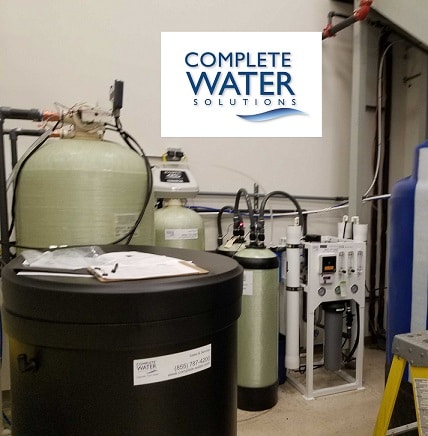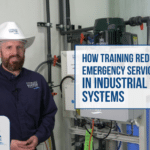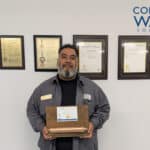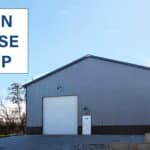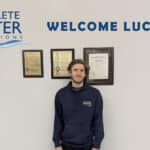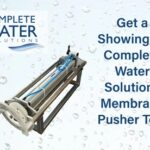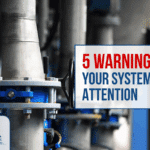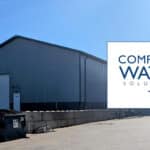Lab Water System Upgrade To Save DI Exchange Tanks
Lab Water System Upgrade from Complete Water Solutions
About 3 years ago Complete Water Solutions was asked to provide DI Exchange Tanks for Deionized water for a lab. We replaced the existing DI tanks with our tanks. The exchange frequency was about 1 change out per month on average. As a part of CWS DI Exchange Tank Service we review accounts to see if there are opportunities to reduce the expense associated with DI Tank Exchanges and increase the overall water treatment experience. Before the 2019 review, we noticed a significant increase in DI Tank Exchanges. As we looked further into it we found that the Deionized Water demand had increased due to new tests that were being performed. This increase was spotted quickly and we began to review options to help reduce the number of exchanges.
After our audit and cost analysis, we determined that putting a RO System prior to the DI Tanks would be the best option to reduce the number of DI Tanks required. (Future Demand Taken Into Consideration)
How to calculate Mixbed DI Resin Capacity –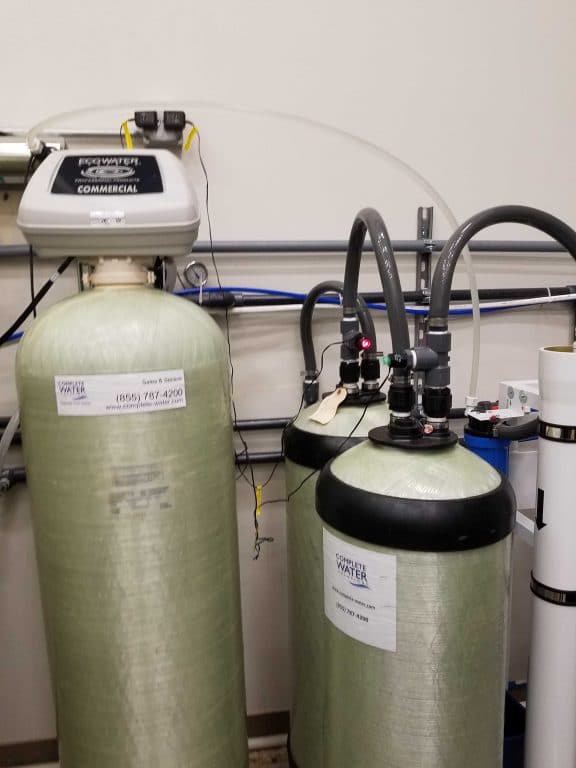
(A Few Assumptions)
1.) pH Range 6-to-8
2.) Assume 90% of capacity is used and mixed bed endpoint is 1 megohm
60/40 Mixbed Tanks
3.) 12 Kilograins per Cubic Foot
What is the mixed bed resin capacity of a water with 250 micromhos conductivity?
Using 90%: (12 X 34 X 1000)/250 = 1632 gallons per cubic foot
Customer Increased Lab DI Water Demand = 20,240 Gallons Per Month
City Water Quality 300 micromhos
3 Cubic Foot Tanks Used
(36x34x1000)/300 = 4,080 Gallons (per Tank)
Now that we can see approximately how many DI Tanks we will go through a month.
Installing a RO System prior to the DI Tank will increase the capacity of the DI tanks as you will be reducing the micromhos (TDS) prior to the tanks.
This system consisted of the following equipment:
Qty (2) 24″ x 72″ Water Softener Systems Eco Water EWS190 Twin Softener System
Qty (1) 18″ x 60″ Carbon Filter Eco Water EWS171CS Single Carbon Filter /W Lock Out Switch
Qty (1) ECO 6000 Ecowater Reverse Osmosis System
New 200 Gallon Cone Bottom Storage Tank
Each piece of equipment had a specific function to help increase the output of the DI Exchange Tanks.
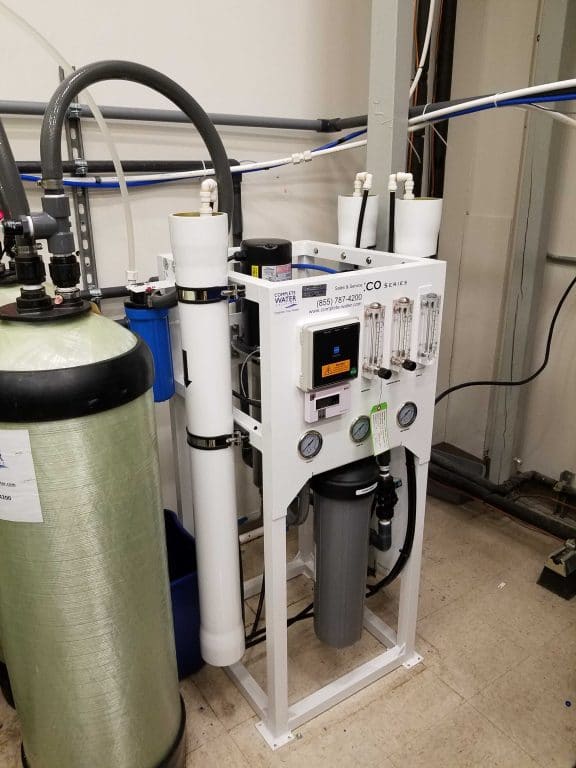
The RO System reduced the Micromhos from 300 to 6. That reduction in TDS (Total Dissolved Solids) allowed us to increase the capacity on the DI Tanks.
(36 x 34 x 1000) / 6 = 204,000 Gallons Of DI Water Per Tank
In some cases you may want to convert to a smaller DI tanks to allow for more frequent exchanges and reduction in tank costs.
Overall consistency and quality should be better by putting in a RO System w/ pre treatment prior to the DI Exchange Tanks. This is due to the equipment before the DI Tanks taking out the majority of the TDS. So if there are any fluctuations in incoming water quality, the pre treatment will deal with the majority of that.
Some things to consider before converting your system:
- Maintenance Costs: there are additional maintenance costs associated with RO Systems, such as membranes, sensors, pumps, probes, pre filters, etc. These maintenance costs may end up costing more than just running DI Exchange Tanks.
- Consumables: Items such as salt, pre filters, RO membranes add to the overall operation costs and should be calculated in to see if the payback is good.
- Waste Water: In some applications a RO System is not the best way to go. Those applications may include facilities that are limited on waste water or waste disposal. A RO System, water softener and backwashing carbon filter will generate waste water.
Want To Have Your DI Water System Audited?
Call (855) 787-4200 or Email info@complete-water.com

With over 30 years of hands-on experience in the water treatment industry, Nathan Olszak is a trusted water treatment expert. He specializes in designing, engineering, and servicing water treatment systems. As the owner of Complete Water Solutions, Osmonics, and Membrane Cleaning Pro, Nathan has built a reputation for delivering customized water treatment solutions that enhance efficiency, reliability, and water quality across various industries, including the medical, commercial, and manufacturing sectors.
Nathan’s journey in water treatment began as a service technician. He gained in-depth knowledge by working with all major brands of equipment, including Veolia, Suez, Bruner, Culligan, Pentair, Aquamatic, Osmonics, GE Water, Marlo, Lakeside, Fleck, Autotrol, US Filter, ION Pure, Siemens, Evoqua, and many others. This hands-on expertise, combined with his technical certifications, has made him a leader in water system engineering and water management.
Credentials & Expertise
- Certifications: David H. Paul Reverse Osmosis Certification, PLC Programming
- License: Power Plant Operating Engineer 3rd Class
- Specialties:
- Design & engineering of water treatment systems and advanced water systems
- Custom water filtration systems and solutions
- Installation, automation, and repair of water treatment systems
- Expertise in Reverse Osmosis (RO), Deionization, Water Softening, Carbon Filtration, Iron Filtration, UV Treatment, Ultrafiltration (UF), Process Filtration, CEDI/EDI, and more
- Specialized knowledge in Boiler Feed Water, Tower Makeup Water, and drinking water production for industries such as bottling, pharmaceuticals, and food processing
- Project management and reclaiming of water system waste for other uses
- Evaluation of raw water sources and potential contamination risks
- Industrial water treatment strategies to prevent corrosion and optimize system performance
- Boiler water treatment to enhance energy efficiency and system longevity
Nathan’s commitment to excellence extends beyond equipment sales and service. He works closely with clients to develop tailored water treatment services that optimize performance and meet their operations’ unique demands. His expertise covers methods that mitigate water impurities, ensure fresh water accessibility, and maintain regulatory compliance. It also includes the design of high-efficiency reverse osmosis systems for industrial use.
Nathan focuses on the latest technology in water conditioning, water softeners, filters, and pumps to improve maintenance and efficiency. His experience in laboratory testing and biofilm control ensures the highest industry standards in water treatment processes and water management.
Additionally, his deep understanding of infrastructure and water data analysis provides long-term, cost-effective solutions that promote health and safety. His expertise ensures that businesses receive top-tier, quality water treatment solutions.
For insights into the latest industry trends, innovations, and best practices, explore the Complete Water Solutions Blog, where Nathan shares valuable information on water filtration systems, sustainability, and water solutions engineering.
Give Us A Call (855) 787-4200 or Email info@complete-water.com


